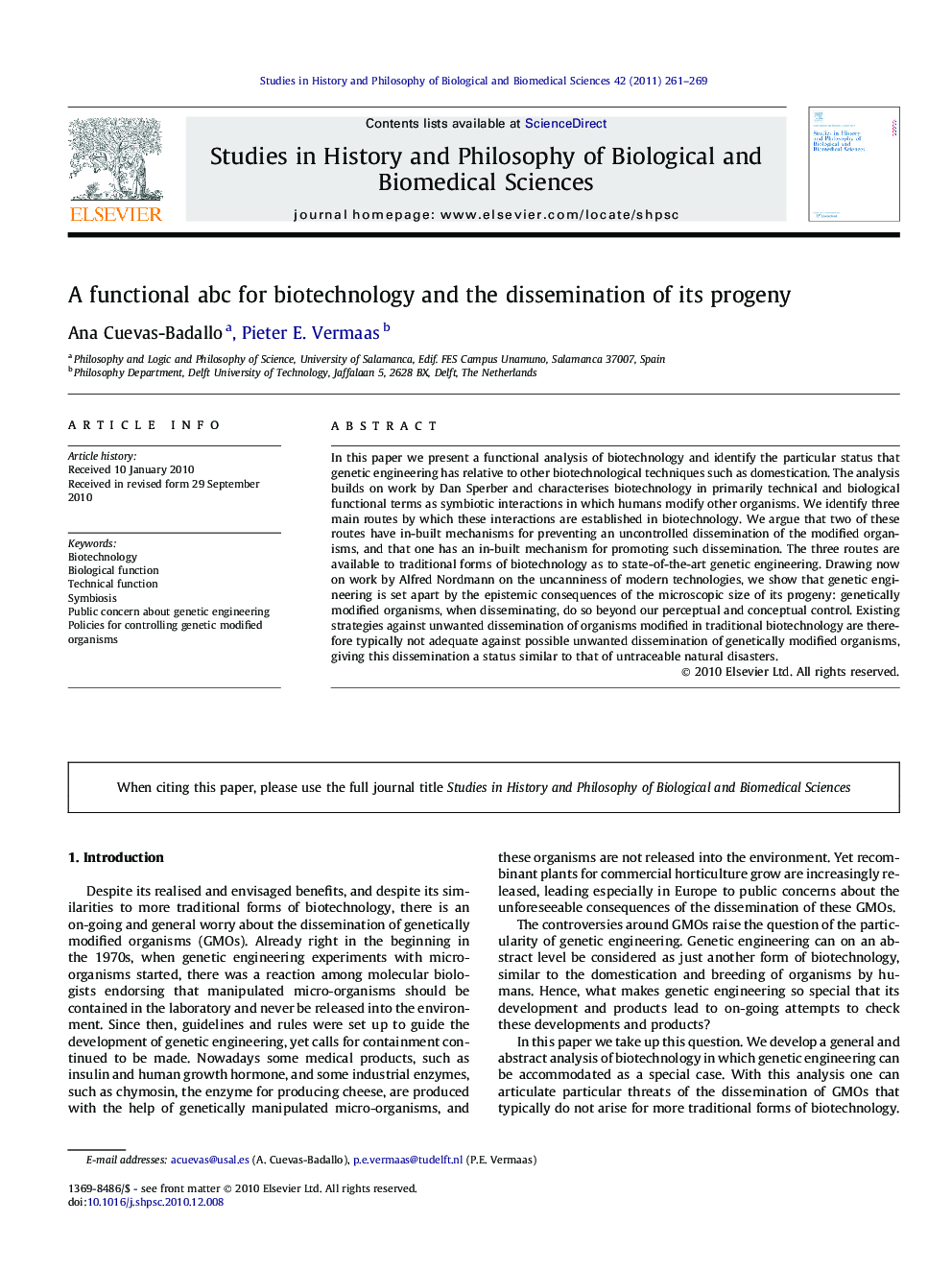| Article ID | Journal | Published Year | Pages | File Type |
|---|---|---|---|---|
| 7553251 | Studies in History and Philosophy of Science Part C: Studies in History and Philosophy of Biological and Biomedical Sciences | 2011 | 9 Pages |
Abstract
In this paper we present a functional analysis of biotechnology and identify the particular status that genetic engineering has relative to other biotechnological techniques such as domestication. The analysis builds on work by Dan Sperber and characterises biotechnology in primarily technical and biological functional terms as symbiotic interactions in which humans modify other organisms. We identify three main routes by which these interactions are established in biotechnology. We argue that two of these routes have in-built mechanisms for preventing an uncontrolled dissemination of the modified organisms, and that one has an in-built mechanism for promoting such dissemination. The three routes are available to traditional forms of biotechnology as to state-of-the-art genetic engineering. Drawing now on work by Alfred Nordmann on the uncanniness of modern technologies, we show that genetic engineering is set apart by the epistemic consequences of the microscopic size of its progeny: genetically modified organisms, when disseminating, do so beyond our perceptual and conceptual control. Existing strategies against unwanted dissemination of organisms modified in traditional biotechnology are therefore typically not adequate against possible unwanted dissemination of genetically modified organisms, giving this dissemination a status similar to that of untraceable natural disasters.
Related Topics
Life Sciences
Agricultural and Biological Sciences
Agricultural and Biological Sciences (General)
Authors
Ana Cuevas-Badallo, Pieter E. Vermaas,
